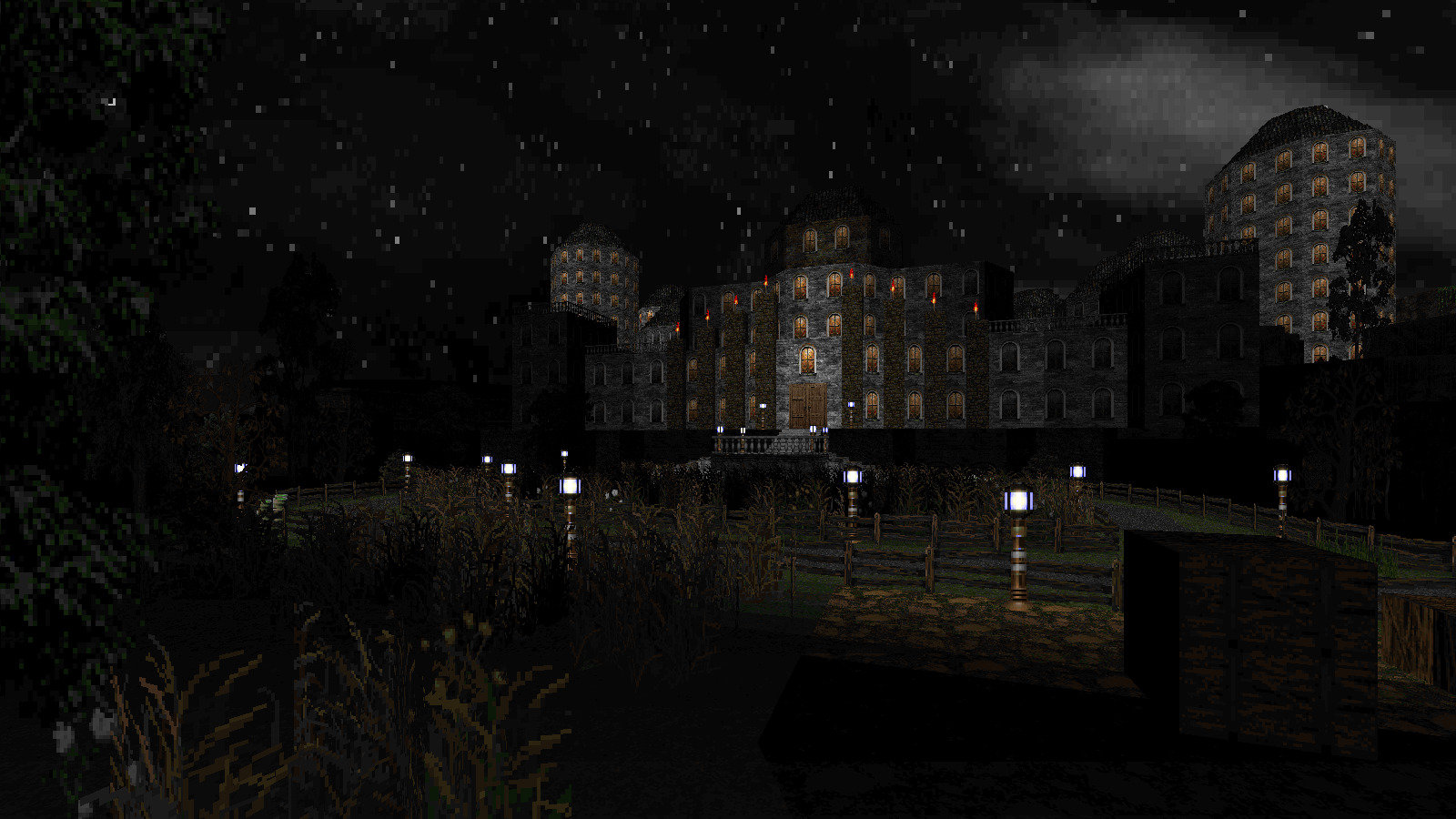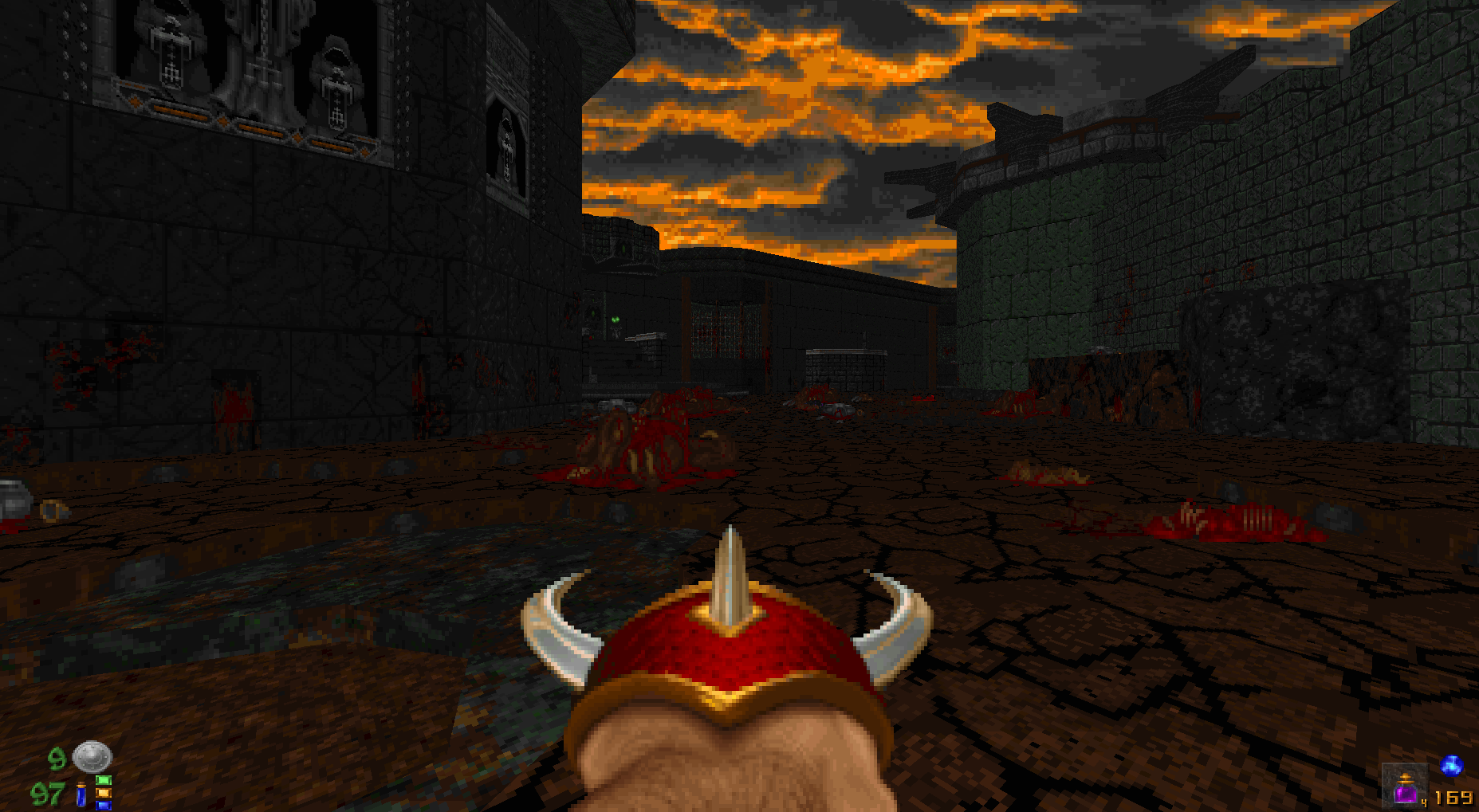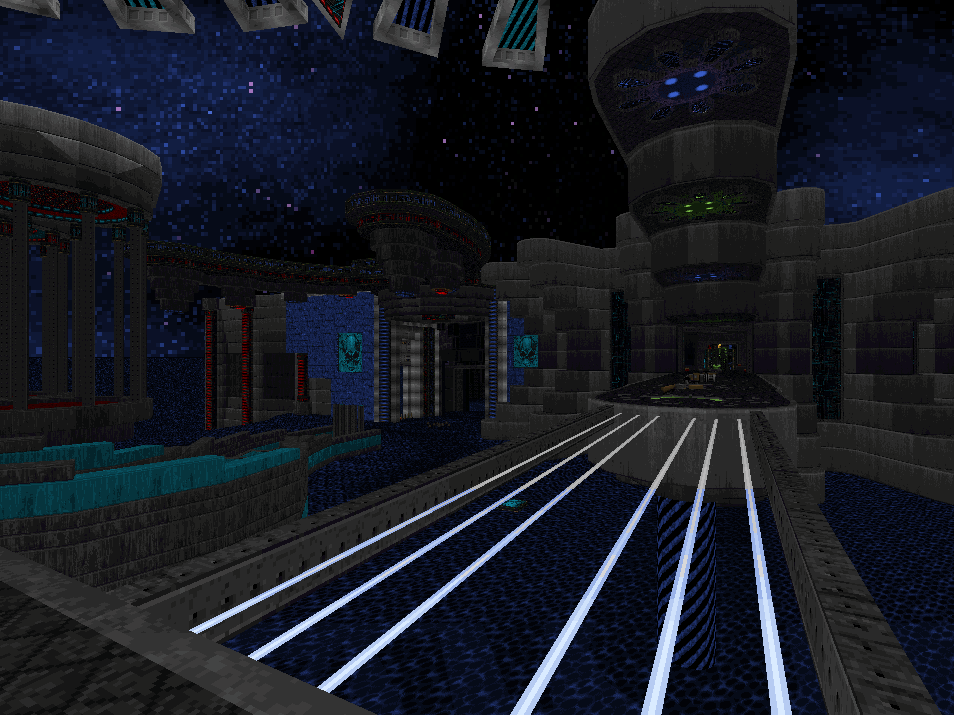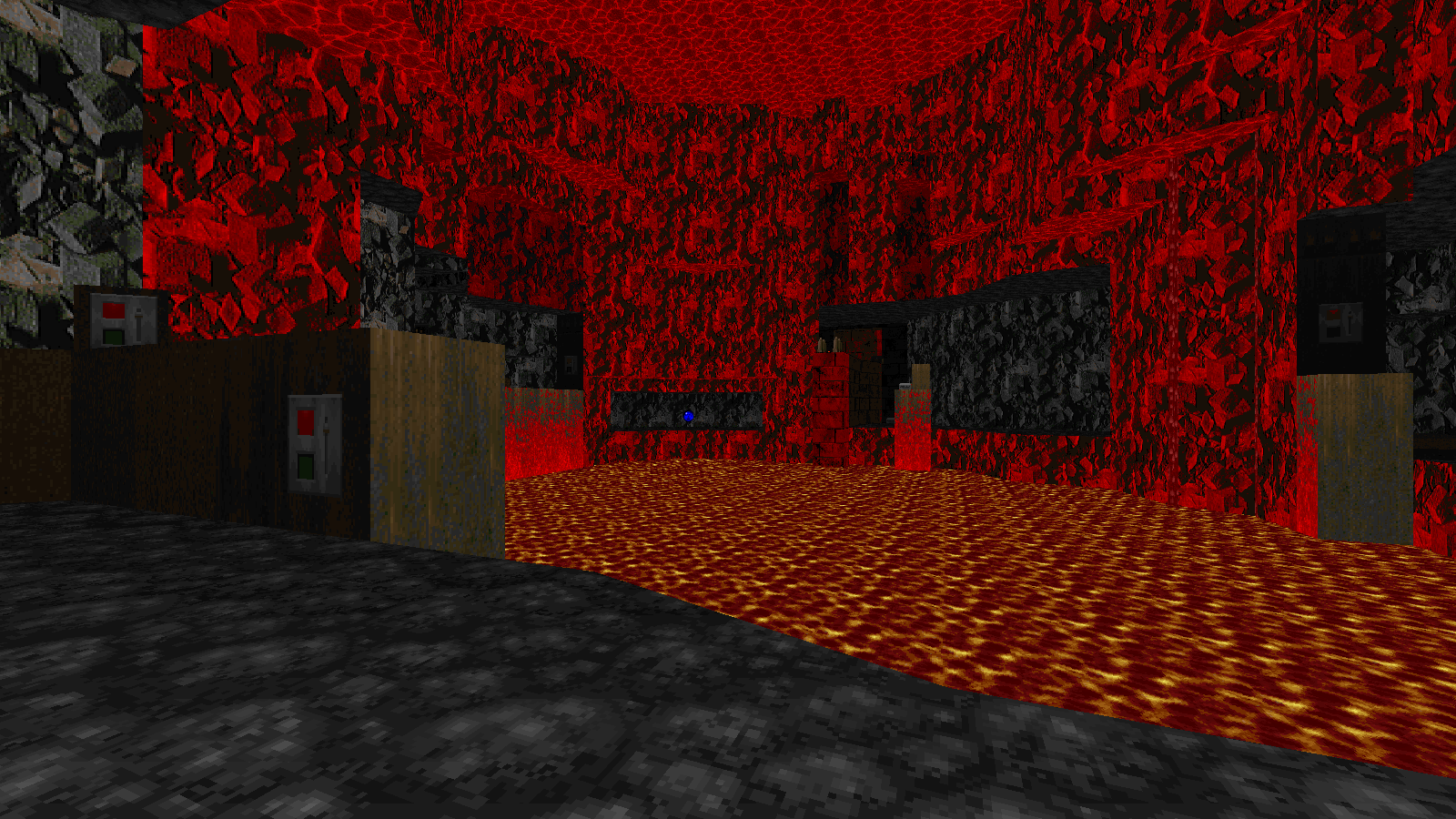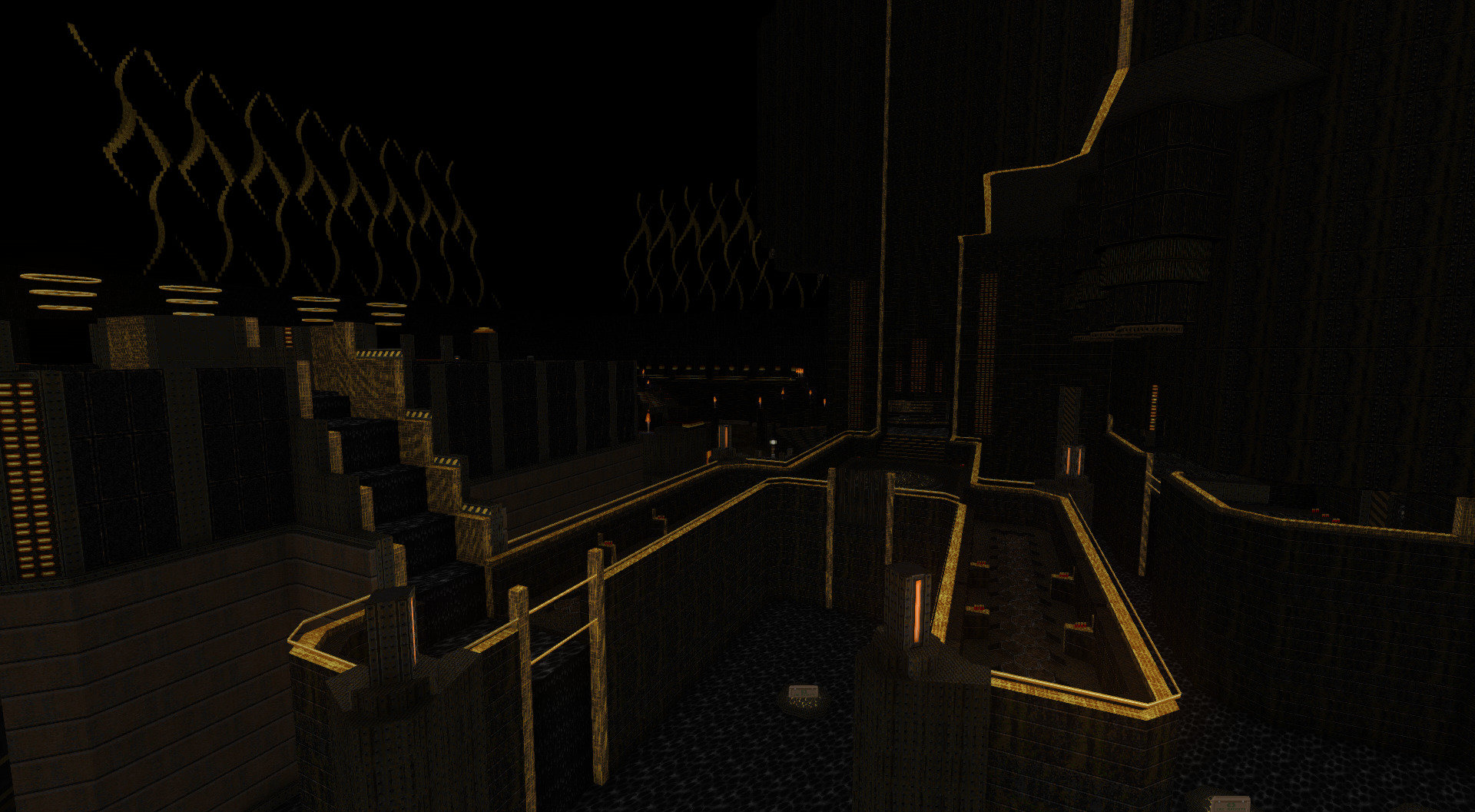-
Doom 2, Boom-compatible, 22 maps
Doom and "realism" have had a long and troubled romance; about equal parts knife and spoon, let us say. Since the earliest days of PWADing, the community has produced no shortage of content aiming to believably recreate real-world locations of all descriptions in idtech1—offices, schools, (MY)houses, churches, sewers, villages, even proper cityscapes, to name but a few. While there's something intrinsically appealing about the promise of immersion that this style of design offers, in practice, the fast action on which Doom is broadly founded and the mundane necessities of realistic design are often like oil and water. Nevertheless, enterprising WADmakers have been finding ways to have their cake and eat it too in this regard for years now, such that we even have a pet term for that peculiarly endearing intersection of representational design with Doom-y moon-logic: "Doomcute."
Lost Civilization, then, is not merely Doomcute, but goddamned Doomsexy, a passionate rendezvous of sumptuous, travelogue-perfect scenery with sultry freeform bloodletting, set against the outwardly idyllic backdrop of a nameless society gone to (demon)seed and overrun by undead; the Summer of Love as directed by Lucio Fulci, if you will. The mapset opens with the protagonist clandestinely landing on the rocky coast of an outlying island, beginning an odyssey of travel by any means necessary along the archipelago and ultimately towards the secret nestled in the mountains at the heart of the mainland. Along the way, you'll navigate rolling hills, sunny coasts, sweeping river valleys, ancient vernal forests, hidden bogs, and other equally enchanting natural settings, punctuated by stopovers in abandoned resorts, ruined towns and villages, derelict industrial complexes, secluded manors and sundry other bastions of humanity, each location seguing seamlessly into the next.
Though the breathtaking landscape is here the most immediately arresting aspect, Jaska has proven not just a master of vista but also of small-scale mise-en-scène and environmental storytelling, using meticulous texture and prop work together with clever visual and physical interconnection to lend the setting an uncannily credible lived-in feeling. While undeniably beautiful, the true triumph of LC's design is that the fun and fluidity of its action is never sacrificed on the altar of visual fidelity, a feat Jaska accomplishes through sage focus on the core strengths of the Doom engine—fast movement, infinite draw distance, accommodation for a functionally limitless number of active actors, etc.—and tailoring his setting's lush visual presentation to them, rather than the other way around. Thus, LC is characterized by largely unfettered outdoor romping and climbing rather than stodgy room-clearing, skillfully using indoor or otherwise more constrained segments for pacing, with a perfect twist of the unexpected in its story to avoid ever becoming too predictable.
As a natural extension of this incredibly rich environmental design, LC is also one of the most genuinely non-linear mapsets in memory. Because the great majority of its real estate is not merely eye-candy, but an interwoven series of actual playable spaces with countless obvious and not-so-obvious connections between them, the possibilities for approaching a given level are nearly unparalleled in scope, especially with a handful of its centerpiece maps being large enough to accommodate several "normal" maps within themselves. Yet, there's hardly any slog—the largely "vérité" staging of encounters and spacious, robust topography readily allow for boundless mixing and matching of combat tactics and playstyles, while a staunch commitment to optionality in progression throughout bespeaks a designer confident enough in the appeal of the world he's created not to insist that you tour every nook and cranny of it, though many players will probably want to!
Doom's answer to magical realism, Lost Civilization is an immersive and unforgettable trip, and a rare gem in which the adventure you'll have while playing can truly be called your own.
Doom 2, limit-removing, 1 map
One of the joys of tracking the community's output is that rarely do all of a year's memorable works come, as predicted, from known entities. Every so often, masterpieces spawn with no alert or warning. Joining in the sporadic tradition is Aurelius's debut Remnant, a violent adventure through palatial ruins and rich fauna and seedy back alleys, a current of spiritual mystery always lurking underneath.
Still in the afterglow of OTEX's release, we've side-eyed it internally, with its boundless supply of gorgeous assets, as a sort of aesthetic cheat code. It might seem capable of sugaring up rough tack into eye candy, but after a discerning shake, the illusion gives way. If the mapper's work is sloppy, OTEX will hog the credit for any slick looks.

Aurelius steps up. At all scales, from sweeping architecture to finely sculpted detail, Remnant is a feast of sights, as it would be with any asset pack. During a lull, a depleted player might find a spot to rest under the sunset sky. Like an oil painting, the scene explodes with depth and color: the green of moss and trees, dotting countless hilltops; the blue of streams and lakes, carving rocks beneath bridges; the white of stone and marble, peeking out from overgrowth; the brown of debris; the black of grand towers; the venom hues of dyed carpets, fiery cauldrons, cursed glyphs aglow, and portals into eons gone. Colossal beams of metal run overhead, tracing sharp angles over life and death below. Blood cuts through rivulets, pooling around corpses and stacked skulls. The air burns with the incense of sacrifice. Or did you just fart? Solemn statues of the damned squint with disapproval: "get back to killing!"
And there is plenty of killing. Encounters roar into being and spill through terrain. Each beat is full of joyous chaos: the sort you can ease into slowly, or if you know where to go, dash through and stir up a mess. Though warp-ins are commonplace, the variety is remarkable. There are tactical guerilla clashes, juicy eruptions of imps and hitscanners, and full-on cyber-tagteam massacres. Add clouds of cacos drifting, raining spitfire—and archviles, though rare, timed perfectly to induce panic. Mix in scripted duels in cramped arenas and battles unbounded by time or space. Countless more unfolds, including a punch-out to get in touch with your animal side and BFG catharsis for good measure. Every moment comes to life anew.
To some degree, whether through direct inspiration or converging strains of influence, Remnant is an unholy stew of much of the decade's cool stuff. The start arena, with its fitted joints and slabs of rust metal, is only the first area that recalls BTSX's second episode. The apparitional flashes into dark realms unknown bring to mind the secret fights of Sunlust. The crumbling brickwork near your first breath of outdoor air would be right at home in Brigandine. The multi-phase setpieces at climactic moments have the flair of skillsaw at his conductorial finest. Layered into the main progression, in so many secluded nooks, is an extensive secret sidequest, like too many grand maps to list. Numerous weapons are buffed slightly and sprite-swapped with the Realm667 repository's best stock. And of course, there is OTEX. The density of ideas is such that the closing stretch threatens to burst apart, ending in a triumphant coda of boss fights stacked end over end, which feels a bit much. But, hey, it works.
If that sounds like a claim of unoriginality, it's not; nearly all maps, as they are crafted, have their uncertain path through the void illuminated in part by torchbearers gone past. Few maps truly match up in any single facet they cop guidance for. Remnant matches up almost everywhere, with countless twists, and rises from the cauldron as something we haven't seen before.
- @rd.
Heretic, ZDoom, 9 maps
Full disclosure: Not Jabba, the author of the wad, and rdwpa, one of his primary playtesters, are both fellow Cacoward writers. With few other committee members available or willing to assess the project's qualities, I was selected for the task because of my perfect qualification: my passionate aversion to Heretic.
Or: How I Learned to Stop Worrying and Love the Tome.
Wayfarer is a single Heretic episode for ZDoom, but a fairly conservative one for its particular stable. There's no fancy 3D floor stuff, slopes or GL glitz, the wad targets the software renderer look and the underlying build is essentially all Boom. It even uses voodoo dolls for scripting. Not Jabba mentioned Eternal Doom and Legacy of Heroes as influences, but the sheer sector count and map expanse remind me the strongest of the grandeur of Chris Lutz's recent mapping (Hellscape, Dark Tide). Wayfarer is a very pretty wad full of giant medieval fortresses, expansive gardens and winding dank cellars, but it retains a strong traditional feel.
So why Zdoom, you ask. Believe it or not, the answer is gameplay. The beating heart of Wayfarer is Not Jabba's extensive and meticulous rebalancing of Everything Wrong With Heretic. In short, and with apologies to our fun-challenged cousins in the Heretic fandom, Everything. Heretic's monsters are infamously ineffective yet spongy, its arsenal the cutest collection of fantasy-themed nerf guns. Even worse, the inventory system lends to hoarding power items, further hamstringing desperate attempts to endanger the player.
Not Jabba overhauls this sorry status quo entirely, building upon the gameplay-tweaking foundations of RottKing's Elf Gets Pissed and driving the effort to touchdown with Decorate-based custom actors. Leaving no stone unturned, nearly all weapons got a damage boost. The Ethereal Crossbow in particular finally feels like an equivalent to the Doom SSG, complete with a slight slowdown. Phoenix Rod got a loudness boost to sound less wimpy, yay! The Firemace got outright ditched in favour of the BFG-like Lightbringer, a destructive but expensive beauty that finally introduces Heretic to the conflict of wanting to shoot a weapon, yet greedily guarding its ammo stack. Many enemies were softened a little on the hitpoint side, but their attack saw an upgrade, so dying is an actual threat throughout the wad. Particularly weredragons feel like monsters with a new purpose—making your life hard.
Inventory items and powerups are a chapter of their own. The player is led to activate the Tome of Power as the first thing to do in the first fight of the first map. And the wad introduces a very common "light" version of the Tome (Sigil of Power) that activates right on pickup and lasts half the time. You can basically hear Not Jabba whispering in your ear to use the Tomes and Sigils right away. You both need them and they're fun, so don't hog them like you're used to, live a little!
Gameplay balance will always be subject to personal tastes, but speaking for myself, Wayfarer made me enjoy Heretic like never before. The maps themselves are very well designed and magnificent in scope, but I very much doubt I'd be able to stomach a Speed of Doom-style, loose 700-monster light slaughter bonanza with the original monster/weapon settings. Yes, the mapset revels in its Doom-esque equilibrium and doesn't shy away from scenes of mass destruction or combat puzzle arenas, so expect many maps to consume an hour or more, particularly if you're into hunting down cryptic secrets.
In the end, Wayfarer is a powerful, expansive mapset that brilliantly bends core Heretic gameplay to a new exciting standard. Yet perhaps that shouldn't be the end of it and Wayfarer could conquer the Heretic scene as a standalone gameplay mod? Just saying, infect the rest!
- @dew




